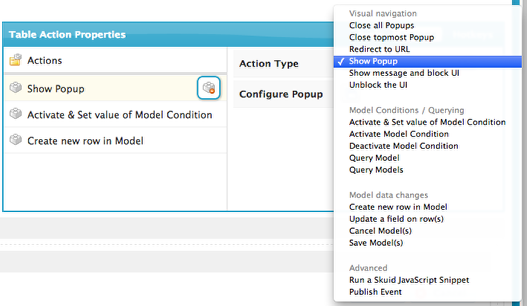
Extending your Salesforce UI with Skuid
Skuid (Scalable Kit for User Interface Development) provides an impressive set of tools to quickly create Salesforce pages with a custom user interface and greater functionality. In order to decide when it might make sense to consider Skuid as a possible solution, it helps to have an overview of how it works. These are the basic elements of Skuid.
AppComposer
This is where Skuid pages are built. They can be built from scratch or from one of several templates provided. Skuid components are dragged and dropped onto a page with no code required. Skuid pages can be stand alone pages, replacements for Salesforce standard pages or several pages could be utilized to overhaul the look and function of the entire org. At its core, it provides a GUI page builder to create Visualforce pages declaratively, vastly reducing the upfront time and cost of the developing similar pages with code.

Models
In order to display Salesforce data within a component on a page it must be linked to a model. Models are setup for each page to query the data necessary for that page. Each model is directly linked to an object in Salesforce or an external data source may be used as well via Skuid model services. Any number of fields can be brought into the model for display in components on the page. Conditions are setup to filter the models to only bring in data relevant to the page being created. Model conditions can be dynamic, static, or updated via actions.
Action Framework
Skuid does more than just enhance the look and feel of a page. The Skuid action framework allows the orchestration of several actions to be carried out in sequence at the push of a button, or as a result of saving changes or updating a field. Actions can include creating new records, setting a new value for a model condition, updating fields and much more. Automation that would normally require Workflow rules, Processes, Flows or some combination of the three can be baked directly into the design of the page.

No Code No Kidding ...unless you want to
Skuid loves to tout the no code mantra yet provides the ability to extend page functionality with in-line JavaScript snippets. Setting up a series of complex actions with many steps can be cumbersome to do declaratively in the Action Framework. Custom actions can be written in JavaScript and called via the action framework. This provides a much cleaner reusable solution for complex actions.
Skuid offers a powerful flexible product that can provide significant improvements in user experience and efficiency, but it comes at a price. It’s an ongoing monthly cost per user to enjoy custom skuid pages in your org. Contact Skuid for current pricing. If only a couple custom Visualforce pages are needed to fulfill a requirement, it would likely not be worth the recurring cost of Skuid licences. If on the other hand, an org requires many custom pages with complex functionality and the ability to adapt those pages quickly to accommodate changing needs, Skuid could be a great way to develop those pages quickly with a relatively low upfront cost.
Have an example of a good use case for Skuid? Please feel free to share it on the Salesforce Success Community, on our Facebook page, or directly at me on Twitter @jpbujold.
